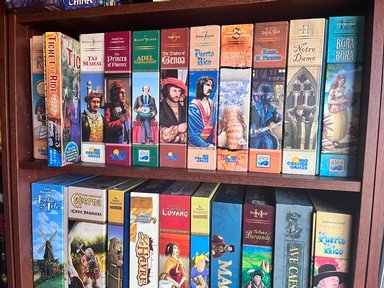Quiz Answer Key and Fun Facts
1. My goal is to cure four deadly diseases before they destroy all of humanity.
2. My goal is to gain as much influence around the world as I can during a recreation of the cold war.
3. My goal is to figure out which words belong to my team, while avoiding the assassin.
4. My goal is to rid my village of murderers while the population shrinks every night.
5. My goal is to gather points by owning as many Estates, Duchies, and Provinces as possible at the end of the game.
6. My goal is to ferret out spies and complete assignments (or the opposite if I'm working for the bad guys).
7. My goal is to connect the cities across the continent with new transportation routes.
8. My goal is to level up by murdering monsters, trip up my opponents, and avoid bad stuff.
9. My goal is bring my legal goods (and sometimes illegal ones) to the market for sale.
10. My goal is to acquire ten victory points by gathering, trading, and spending resources in my new home.
Source: Author
qrayx
This quiz was reviewed by FunTrivia editor
WesleyCrusher before going online.
Any errors found in FunTrivia content are routinely corrected through our feedback system.
